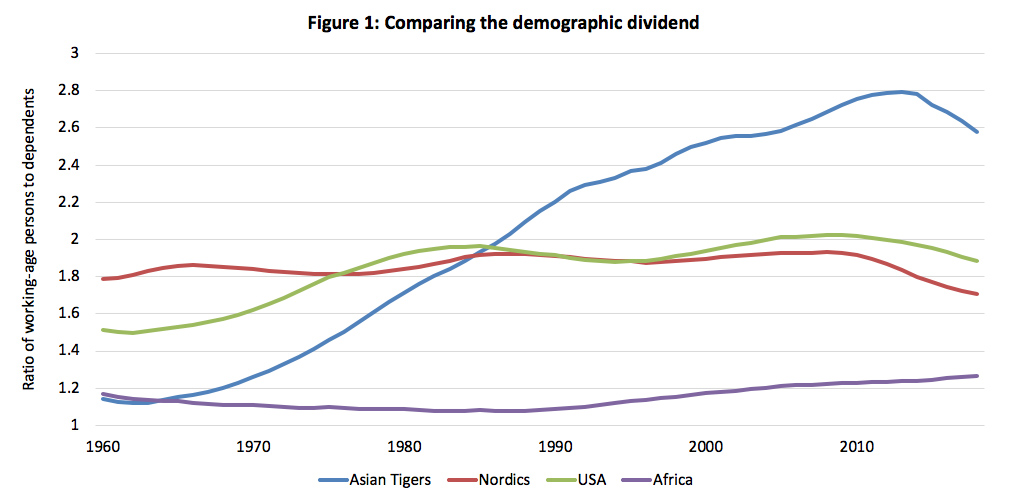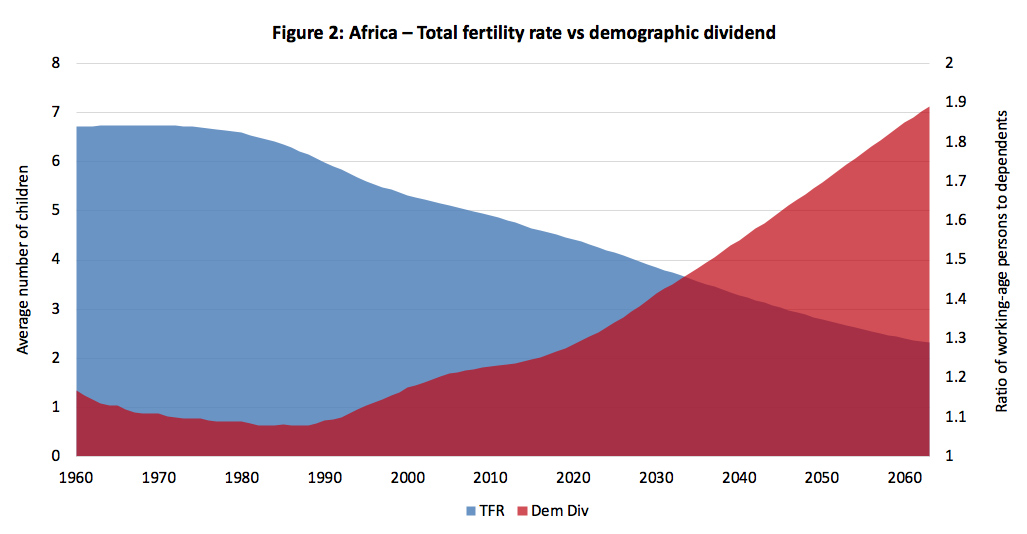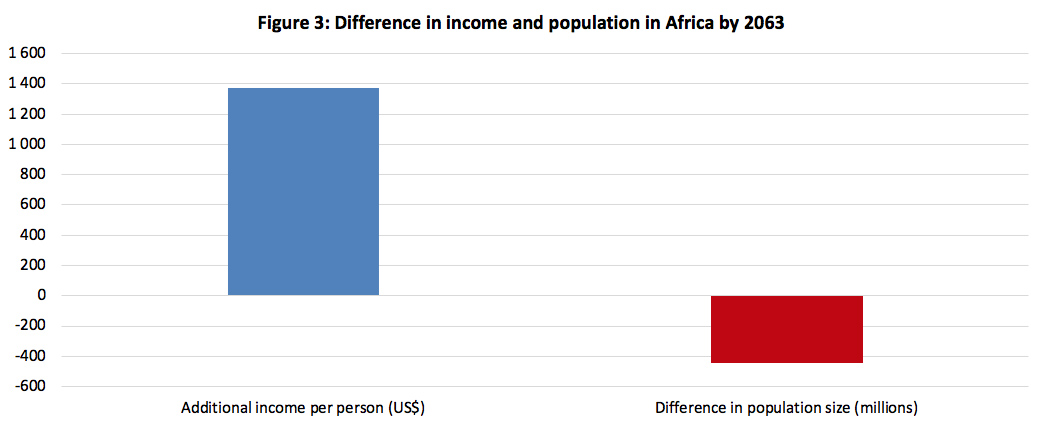First published by ISS Today
Statements such as that made recently by President John Magufuli that Tanzania’s women should “give up contraceptive methods” and that he sees “no reason to control births in Tanzania” are ill informed.
Tanzania has one of the highest fertility rates in Africa together with countries such as Niger, the Democratic Republic of the Congo, Mali, Angola and Uganda. Magufuli is in danger of condemning his country to sustained high levels of poverty since Tanzania’s very high fertility rates preclude reasonable income growth.
When a country’s working-age population (people 15-64 years old) is significantly larger than the dependent population (the very young and elderly), an economic window of opportunity opens, termed a demographic dividend. The ratio between the working-age and dependent population is so important that it explains one third to half of the average annual rate of economic growth over long time horizons. The ratio is determined by the average number of children a woman has in her lifetime.
Currently, in Africa, a woman has an average of 4.5 children. The average in the rest of the world is close to two – generally considered a population replacement rate that keeps population size stable. In Tanzania it is currently at five.
Because of its extraordinarily young population, Africa will benefit from favourable demographics, but only in the very long run and perhaps less than most Africans assume (see Figure 1).

Source: International Futures v7.36
There are basically two routes that have allowed countries to benefit from a demographic dividend. The first is to rapidly reduce fertility rates to quickly get to a high ratio of working-age persons per dependent. That is what occurred with China and the Asian Tiger economies (Hong Kong, Singapore, South Korea and Taiwan) and helps to explain their high economic growth rates.
In these countries total fertility rates declined fast from six children to fewer than two within two generations. The reduction translated into an exceptionally high working-age-to-dependent ratio, peaking at 2.8 working-age persons for every dependent, before recently starting to decline. The result was extraordinarily rapid income growth.
The alternative strategy is to stay at a lower but still favourable ratio of working-age persons per dependent for an extended period of time – an important reason for the sustained improvements in income levels by the United States (US) and the Nordic countries over successive decades.
The US has, for example, been able to benefit from a demographic dividend for three quarters of a century with a ratio that has fluctuated between 1.5 and two working-age people per dependent. Fertility rates in the US have always been slightly higher than in other countries at similar income levels and the consistently large influx of young migrants has served to expand the size of its working-age population relative to dependents.
Africa has not been that lucky. Average fertility rates were close to seven children per woman during the independence era in the 1960s. The ratio of working-age people to dependents (mostly children) actually declined from an already low 1.2 for several decades to bottom out at less than 1.1 in the late 1980s.
The reason for the decline is that fertility rates in Africa have dropped slowly getting to just below six children at around 1990. Since the earnings of a smaller group of working-age persons had to be spread among a larger group of dependents, average incomes did not improve (for this and other reasons).
Fertility rates in Africa are now declining a bit faster and the ratio of working-age people to dependents is improving and will do so over the long term. Currently the ratio of working-age persons to each dependent is at around 1.3. By 2030 it will reach 1.4 and eventually peak at a rate of roughly two in 2070 (Figure 2). From 2050, when the ratio inches above 1.7, Africa is likely to experience a period of solid economic growth.

Source: International Futures v7.36
These relationships will, of course, be affected by changes in science and health. It is clear that people will live longer and more healthily in the future, and are likely to work for several more years than in the past.
Using the International Futures forecasting system from the University of Denver, it is estimated that Africa’s future economic growth rate during its peak demographic dividend period is unlikely to achieve an average of 5% a year. This is in part due to its relatively low ratio of working-age people to dependents. This is far too low to provide sufficient employment and improve livelihoods for its rapidly expanding population.
Better family planning, clean water and improved sanitation, and education can change this. A recent report on demographics from the Institute for Security Studies simulates a scenario that advances Africa’s demographic dividend by improving the provision of water and sanitation, empowering women, reducing the gender gap in education and meeting the demand for contraceptive use that the UN estimates translates into the equivalent of two fewer children per woman.
In that scenario the continent will, by 2063, have 418-million fewer people. Poverty will largely be eliminated and Africa will have an economy that is $1.7-trillion larger than would otherwise be the case. Average incomes in Africa would be significantly higher (Figure 3).

Source: International Futures v7.36
Africans need to engage in public discussions and scholarly analysis of the economic and developmental implications of the continent’s population age structure. Political leadership in discussing gender inequality and family size is vital, as are public media campaigns that communicate the health and economic benefits of smaller families. Facts, not fantasy, should drive policy. DM
Jakkie Cilliers is Head, African Futures and Innovation, ISS Pretoria




















 Become an Insider
Become an Insider